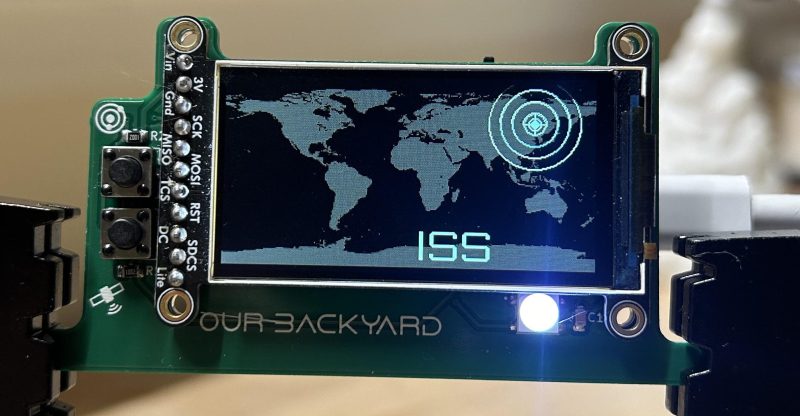Ever been at a party and landed in a heated argument about exactly where the International Space Station (ISS) is passing over at that very instant? Me neither, but it’s probably happened to someone. Assuming you were in that situation, and lacked access to your smartphone or any other form of internet connected device, you might like the pocket-sized Screen Tracker from [mars91].
The concept is simple. It’s a keychain-sized item that combines an ESP32, a Neopixel LED, and a small LCD screen on a compact PCB with a couple of buttons. It’s programmed to communicate over the ESP32’s WiFi connection to query a small custom website running on AWS. That website processes orbit data for the ISS and the positions of the planets, so they can be displayed on the LCD screen above a map of the Earth. We’re not sure what font it uses, but it looks pretty cool—like something out of a 90s sci-fi movie.
It’s a great little curio, and these sort of projects can have great educational value to boot. Creating something like this will teach you about basic orbits, as well as how to work with screens and APIs and getting embedded devices online. It may sound trivial when you’ve done it before, but you can learn all kinds of skills pursuing builds like these.
















“and lacked access to your smartphone or any other form of internet connected device”
But this IS an internet connected device! Surely a no-connection-needed ISS and planet tracker should be able to download emphemeris data on the rare occasions it does connect, and then track forward the object’s position over time. For the planets this is easy, you can download from NASA (or certainly could some years ago as part of an astrodynamics sim program called GMAT) the emphemeris data for where they’ll be for several centuries to come, accurate to some pretty tight margin, planetary motion is very predictable. For the ISS some of the perturbations in its orbit caused by earth’s equatorial bulge, by atmospheric drag and ofcourse when they make a deliberate manoeuvre to maintain orbital parameters, mean you might not get predictions of great accuracy for more than a few weeks (if that). The heavens-above website is good for ISS, and other satellite, predictions. I don’t know whether they have any kind of api or other data service which could be accessed and used to download the data when needed.
And then I read the instructable… Runge-Katta is mentioned so it looks like this might already be doing exactly what I described, using mars91’s own api. In which case, perhaps the hackaday article should be clearer about the fact that this automatically does some amount of forward prediction counting onward from the orbital parameters it received last time it was online. Well done mars91, maybe hackaday could try reporting on this so it would be immediately apparent how this worked.
Yes. Could run “predict” locally.
If you want one better build it fast, Elon is bringing the ISS down.
Hurry up before it’s too late for the ISS (thanks to the sinister clown couple in the oval madness room).
You should add an accelerometer and magnetometer, then it could be used for aiming a hand held antenna at satellites.
I nedd more keys (5 or 16) and autonomic power
“We’re not sure what font it uses, but it looks pretty cool—like something out of a 90s sci-fi movie.”
It does. What’s also looking cool, though, is STS+ from the 90s, which simulated NASA mission control screen.
It even flew on the MIR. Sadly, it’s author passed away; may he and his work be remembered.
https://tinyurl.com/3v94wvym